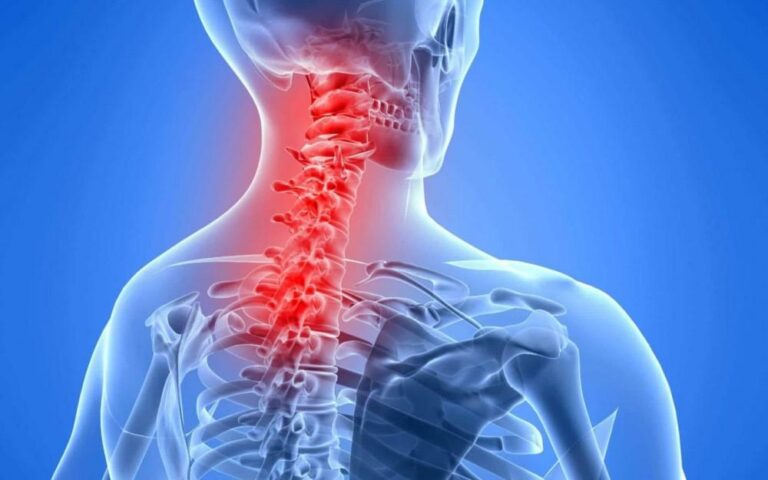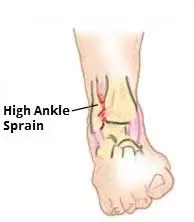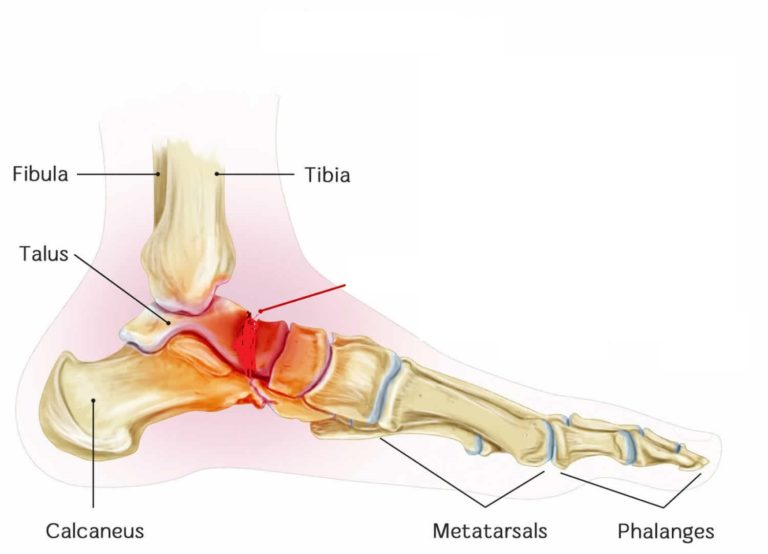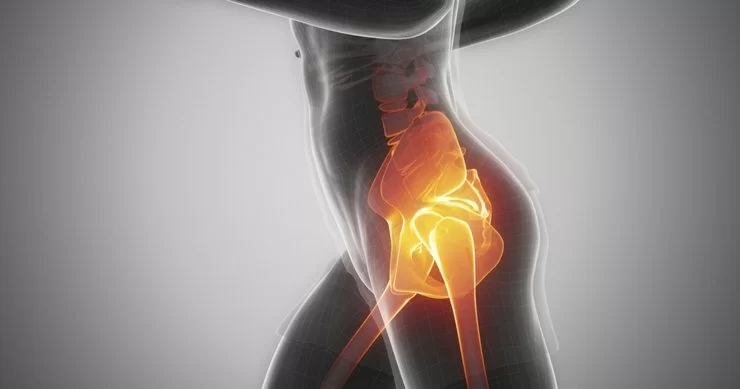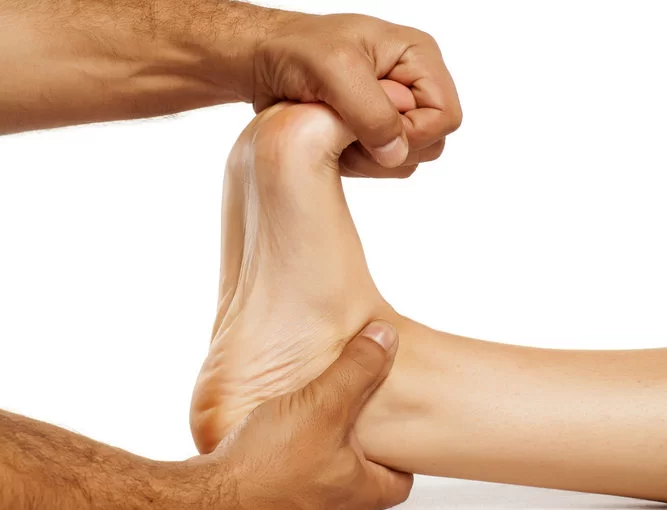What is Pelvic Tilt?
An excessive tilting of the pelvic muscles towards one side is known as a pelvic tilt, which is a frequent postural problem. Usually, this deficit arises from prolonged use of your pelvic muscles in one position.
For instance, your pelvic muscles may become accustomed to bad postures from hours spent lounging on your couch or seated in an uncomfortable workplace chair. Your range of motion may change due to the modified muscles.
Introduction
Exercises known as pelvic tilts involve very small spinal movements that target and develop the abdominal muscles, which provide support for the lower back. These are a terrific starting exercise for people who are trying to relieve lower back pain, and they feel amazing because they offer your back a little stimulation.
A position-dependent characteristic known as pelvic tilt (PT) is the angle formed by a line that extends from the midpoint of the sacral endplate to the center of the bifemoral heads and the vertical axis. There is an average range of 13.0 ± 4.9° for anterior pelvic tilting and 8.9 ± 4.5° for posterior pelvic tilting.
The picture illustrates the pelvis in a neutral position on the left, then a posterior tilt, and finally an anterior pelvic tilt. Check the sway back posture and low back pain associated with hyperlordosis for additional details on posture variations with changed pelvic tilts.
What Is Pelvic Tilt?
An integral part of the human body is the pelvis. This area makes Movement possible by distributing your weight to your lower limbs. The abdominal organs are also kept in position with its assistance. Pelvic tilt is the term used to describe the posture of the pelvis around the body.
Muscle imbalance is the main factor contributing to dysfunctional movement. Lack of mobility, stability, posture, and motor control are frequently caused by pelvic tilt. Your pelvis is frequently skewed in one direction or the other when it is not in proper alignment, and this can cause numerous further problems in the kinetic chain.
A significant number of pelvic tilt issues are related to the hip flexor and hip extensor muscles. The attachments of some muscles in the pelvic region to the lower back and pelvis might cause these muscles to tighten up. They consist of the rectus femoris, quadratus lumborum, and psoas major, among other muscles.
These muscles influence the lower back and can result in either good or bad posture. You want to assist your clients in avoiding any additional problems that pelvic tilts may cause, such as pelvic floor dysfunction.
The body can experience a host of other issues if the pelvic floor muscles are no longer in control. This occurs due to the pelvic floor muscles’ ability to contract, which supports organ function. Corrective exercise is crucial to include in a client’s program to improve their existing movement dysfunctions and build a more resilient body.
The ISSA’s Corrective Exercise Specialist course can help you start assisting more clients with corrective exercise, which can help enhance performance, recover performance, and lower the chance of injury!
While at rest, your pelvis should ideally stay in a neutral position without sagging forward or backward. When the pelvic muscles are underworked or overstretched, they pull in one way, which can result in a pelvic tilt.
Types of Pelvic Tilt Issues
The pelvic tilt, defined as the pelvis’s position concerning the body, can be used to understand that there are various types of pelvic tilt, each of which denotes a different direction in which the pelvis is fixed.
The three most common types of pelvic tilt issues are lateral, posterior, and anterior tilts. It would help to perceive these poses correctly when determining a client’s pelvic tilt. Inadequate explanations of the language can sometimes confuse both clients and fitness experts.
What is an Anterior Pelvic Tilt?
At this point, the pelvis rotates with its front facing forward and its rear-facing upward. An anterior pelvic tilt can be directly caused by inactivity or a client’s sitting position. An anterior tilt, like the other forms of pelvic tilt disorders, impacts the spine’s health.
Long periods of sitting cause the hip flexors to tighten, changing the pelvic position. If the hip flexors take over for spinal stability, pelvic alignment is harmed. Pregnancy is a common time to observe this. Weak abdominal and gluteus maximus muscles are correlated with this muscular imbalance. Lower crossed syndrome or pelvic crossed syndrome are other names for this illness.
What symptoms indicate an anterior pelvic tilt?
To determine whether you have an anterior pelvic tilt, you can do the Thomas test.
- Settle down on the rim of a sturdy table.
- Lay back on the table with your legs hanging off at the knees.
- Bending the leg till it rests on your chest, pull one in towards you while holding it beneath your knee.
- Continue with the opposite leg.
When you get into this position, your pelvis should be properly placed such that the back of your resting leg touches the table.
Your front thigh muscles are tense if you have to shift your hip or leg to contact the table or stretch your resting leg. This most definitely points to a tilted pelvis.
What is Posterior Pelvic Tilt?
At this moment, the pelvis rotates beneath the body, its front tilting backward and upward. The opposite of posterior pelvic tilt issues is anterior pelvic tilt.
Tight hamstrings are a major contributing factor to posterior pelvic tilt issues. The spine is compromised, similar to anterior pelvic tilt, and corrective exercise would help address the problem.
Posterior pelvic tilt and posture
Body imbalances are frequently the result of inactivity, particularly for those who spend most of their day sitting down. This inactivity is a factor in:
- Leg muscles are stiff and feeble.
- Shortened tendons encircling the lower back.
- Improper balance.
- Poor posture.
Any one of these conditions may result in a posterior pelvic tilt. Your upper body rounds back at this point, and your glutes tuck inward.
A posterior pelvic tilt puts a great deal of tension on the lower back, much like an anterior pelvic tilt that causes the lower back to arch inward. Eventually, this can result in back pain, including sciatica, which is a pain that radiates down the back of your thighs or glutes.
Exercise is a viable treatment for a posterior pelvic tilt. Discover five workouts that can help you build strong leg and core muscles and correct your posture.
What is Lateral Pelvic Tilt?
Every pelvic tilt is different. One hip is higher than the other due to a significant side-to-side displacement in the pelvis is known as a lateral pelvic tilt. Consequently, the body as a whole experiences unilateral muscle imbalances.
Since the erector spinae muscle group frequently contributes to this tilt, it is always advisable to treat it in this context. The pelvis should be in line with the shoulders to enable the lumbar spine to be in a neutral posture. There should always be equality between the two sides.
What Muscles Do Pelvic Tilts Work?
The core muscles are engaged in nearly every movement you make, such as reaching up, bending over to pick up a laundry basket, and even changing your balance from one foot to the other. Pelvic tilts help to stimulate these muscles. Instability and discomfort during daily activities, especially in your lower back, may be signs of weak core muscles.
The “ab” muscles alone do not constitute the core, despite popular belief. The diaphragm, pelvic floor, spinal, and abdominal muscles make up your core. Particularly, pelvic tilt exercises strengthen the following two core regions:
- The deep intrinsic back muscles include the multifidus. It facilitates spinal extension and rotation.
- The muscle located deepest in the abdomen is the transverse abdominis. By encircling the spine and extending between the ribs and the pelvis, it offers stability.
By strengthening these core muscles, you can teach your body to use them more frequently during regular motions, which will increase the core’s workload. This reduces strain and discomfort in the lower back.
How Does Pelvic Tilt Affect Your Health?
There could be negative health effects from anterior or posterior tilts. Through a mechanism known as reciprocal inhibition, nearby muscles will adjust to accommodate the pelvic postural deficit.
These changes might initiate a domino effect of abnormal posture and related health problems, like:
- Back pain: A lower back curvature that is too inward or outward is caused by an anterior or posterior pelvic tilt, which modifies the way the pelvic muscles pull on your spine. Your spine is subjected to excessive pressure from this bend. You can therefore feel aches and pains in your lower back.
- Overstretched hamstrings: Your gluteus muscles become weaker when your pelvis tilts anteriorly, which makes your hamstrings work harder and tighter. Hamstring strains are often caused by tight hamstrings. When the muscles overwork and tear, an excruciating ailment results.
- Stomach bulge: Over time, the abdominal muscles weaken due to the protrusion of the stomach caused by an anterior pelvic tilt. Also, your stomach could look larger.
Your overall fitness may suffer from weakening muscles brought on by pelvic tilt. They might also contribute to bad posture during exercise, which could result in harm.
Importance of Pelvic Tilt
For patients who have chronic lower back pain (LBP), pelvic tilting exercises in the sagittal plane are typically utilized to realign the lumbar spine. One of the primary causes of LBP was shown to be a posture that contributes to lumbar lordosis augmentation.
Reducing the use of the posture that causes lumbar lordosis is crucial when treating low back pain. While posterior pelvic tilting has the opposite effect, anterior pelvic tilting strengthens lumbar lordosis. In rehabilitation, exercises that tilt the pelvis posteriorly are commonly employed.
The local muscles regulate motion in the pelvic sagittal plane, and research indicates that they may be connected to anterior and posterior pelvic tilting. Patients suffering from lower back pain may find that their lumbar posture in the sagittal plane improves with local muscle training. For patients who have less lumbar lordosis, training the multifidus may be more beneficial than training the transversus abdominis.
Chronic low back pain sufferers have decreased pelvic proprioception, a decreased sense of “movement awareness,” and possibly even less postural control. This begs the question of whether particular postures or activities (such as excessive or restricted movement) may put a person at risk for low back pain.
Pelvic Tilt Measurements
“Pelvic tilt angle” is a measurement of anterior pelvic tilt. The angle formed by a line joining the anterior superior iliac spines (ASIS) with a vertical line is commonly used to compute this value. The patient would lie supine on a table, the examiner would palpate the ASIS to find the landmarks for measurement, and then use a goniometer to measure the angle.
“Supine pelvic tilt test,” in which the patient is instructed to lie flat on the table with their knees bent. Next, the examiner watches the patient’s position about their pelvis, noting any asymmetry or departure from neutral. Other exams include the “Thomas test,” which measures hip flexor tightness and may reveal anterior pelvic tilt, and the “prone hip extension test,” which evaluates posterior pelvic tilt.
The application of artificial intelligence (AI) to the evaluation of pelvic radiographs has been studied recently. In a study that was published in the journal International Orthopaedics, Schwarz et al. (2023) assessed over 500 pelvic radiographs using a deep learning algorithm and discovered that the AI software had an accuracy rate of more than 90% in identifying fractures and other abnormalities in the pelvic region.
The authors propose that the application of artificial intelligence (AI)-driven software may enhance the precision and effectiveness of radiography interpretation, especially when several images need to be examined. To assess the software’s effectiveness in various clinical contexts and with various kinds of radiographs, more investigation is necessary. The possibilities of AI in medical imaging and its capacity to assist radiologists in their clinical practice are highlighted by this study.
What Are the Causes of Pelvic Tilt?
Common pelvic tilt causes involve:
- A sedentary lifestyle.
- Overindulgence in sitting, whether it is while working, while watching TV, or during commutes.
- Long periods spent relaxing.
- Poor posture.
Extended periods of inactivity can cause a pelvic tilt in many persons. According to a recent survey, 19.7% of American adults spend more than eight hours a day in chairs, and 26.9% of individuals spend more than four hours a day in chairs. Seated for extended periods might exacerbate postural problems such as pelvic tilt.
Pelvic tilts are not a random occurrence. They grow by certain motions and even by being still. You may help your clients attain better outcomes by identifying the areas where these imbalances exist and understanding how they can worsen.
Hip Flexors
A tight hip flexor muscle is the cause of an anterior pelvic tilt. Muscles shorten when they tighten. Hip extensors lengthen or loosen up in response to a shortening of the hip flexors. Hip flexor muscles such as the rectus femoris, sartorius, and iliopsoas attach to the pelvis and lower back. These muscles’ primary function is to bend the hip because of where they originate and attach. The hips stay flexed as a result of poor posture and extended sitting. The pelvis will rotate; the front will turn forward and the back will turn upward as you bend at the hips. In someone with this specific body position, an anterior pelvic tilt can happen.
Pregnancy frequently results in pelvic tilts, which are crucial for delivery. Exercises that strengthen the core and surrounding muscles during pregnancy should be done with a pelvic tilt. Keep in mind that postpartum rehabilitation activities are as important.
Hamstrings, Glutes, and Abs
Tight hamstrings and glutes pull the bottom of the pelvis under the body when the front of the pelvis tilts up and back. While weaker muscles in the lower back do not react, tight muscles in the abdomen raise the pelvis. This leads to a problem with posterior pelvic tilt. For a posterior pelvic tilt, the situation is the opposite.
Quadratus Lumborum
A client you work with may have a lateral pelvic tilt if you’ve ever heard them describe having one leg shorter than the other. With a lateral pelvic tilt, one leg may appear shorter than the other. The quadratus lumborum is typically the primary muscle involved in the development and correction of a lateral pelvic tilt.
The quadratus lumborum muscle is located deep within the abdominal wall and is connected to the lumbar spine and pelvis. The main purpose of this muscle is lateral bending, also known as side-to-side bending. This aids in pelvic stabilization. A lateral pelvic tilt is caused when a muscle on one side of the spine becomes more taut, pulling the pelvis up on the opposite side.
The correct pelvic alignment must first be understood to prevent pelvic tilt in your clients. Make the effort to ascertain whether your customers have a pelvic tilt or show indicators of one while assessing them. To recommend an appropriate training program that includes the appropriate corrective activity, a fitness trainer needs to be aware of the presence of a tilt.
What Are the Symptoms of Pelvic Tilt?
Numerous pelvic tilt symptoms might be experienced by you, including:
- Femoroacetabular impingement: Consistent use can wear down the hip’s femoral socket ball, causing pain when you move the joint.
- Lower back pain: There could be aches, pains, or a stabbing sensation in the area of your back that runs between your ribs and pelvis. After performing physically taxing activities like lifting heavy objects or working out, experiencing pain is more common.
- Sacroiliac joint pain: Because these joints are inflamed, lower back pain can also radiate to the buttocks, groin, thighs, and upper back.
See a doctor if you suddenly develop excruciating back or joint pain. In some cases, pelvic tilt can result in nonspecific groin pain.
How Is Pelvic Tilt Diagnosed?
There are several methods available to healthcare providers for diagnosing pelvic tilt.
One common method is visual analysis, in which the patient stands in a relaxed stance while being examined from the side.
The doctor will see a line joining the anterior and posterior superior iliac spines to measure pelvic tilt. However, no studies have assessed the accuracy of visual analysis for pelvic tilt.
Other diagnostic tools for pelvic tilt involve:
- A caliper-based inclinometer is used to measure the angle of slope in the pelvis.
- A hand-held inclinometer.
- Radiographic analysis.
- A smartphone app that functions as an inclinometer.
Currently, inclinometers and smartphone apps provide the most accurate measurements of pelvic tilt. Radiographic imaging can be used by doctors to schedule surgery for pelvic tilt correction.
Common Mistakes
You’re Forgetting to Breathe
If you neglect to breathe, it will be insufficient to concentrate on good form and use your core efficiently. Breathing is crucial to every workout you perform because it keeps you focused and helps you avoid damage. Recall that for your muscles to work at their best, they require oxygen.
You’re Using Your Core Incorrectly
Make sure to concentrate and use your abdominal muscles fully while you contract them. As you execute the exercise, don’t merely suck or push your tummy in. When you have your core fully engaged, you will feel the activation of deeper muscles (transverse abdominus).
You’re Lifting Your Pelvis
You’re more closely approaching a bridge position than a pelvic tilt if you allow your buttocks to rise off the ground as your pelvis tilts. Additionally, you can wind up rolling your pelvis the incorrect way—that is, towards your feet instead of your head.
Modifications and Variations
There are numerous approaches to executing a pelvic tilt. Test them all until you find the one that suits you the best, taking into account your needs, comfort level, and fitness objectives.
The standing pelvic tilt may be a more comfortable option for you if you’re expecting or have a medical condition that makes lying on your back uncomfortable.
- Slightly tilt your body in the direction of a solid wall with your back to it.
- Breathe in and let your knees flex a little.
- As you raise your pelvis away from the wall and towards your face, release the breath. Your lower back’s natural curve should be straightened throughout this action so that it presses up against the wall.
- When you’re ready, take a breath, then step back into your neutral starting posture.
- Perform five to ten repetitions.
When performing this exercise, you might find managing any back or shoulder pain easier if you place a small ball between your back and the wall.
The differences between Anterior Pelvic Tilt, Posterior Pelvic Tilt, and Lateral Pelvic Tilt:
| Feature | Anterior Pelvic Tilt | Posterior Pelvic Tilt | Lateral Pelvic Tilt |
| Definition | The front tilts downward and the rear rises as a result of the pelvis rotating forward. | Pelvic rotation backward, results in the front of the pelvis rising and the back tilting lower. | Pelvic rotation backward results in the front of the pelvis rising and the back tilting lower. |
| Common Causes | Insufficient gluteal muscles, tight hip flexors, and prolonged sitting. | Tight hamstrings, weak abdominal muscles, excessive standing. | Muscular imbalances, scoliosis, and differences in leg length. |
| Associated Symptoms | Hip pain, lower back pain, and hip flexor tightness. | Weakened abdominal muscles, hamstring tightness, and lower back pain. | Hip pain, tightness or weakening in the muscles on one side. |
| Postural Effects | Bulging belly and exaggerated lumbar lordosis, or an arched lower back. | Upper back rounding, tucked pelvis, and flattened lumbar curve. | Abnormal leg lengths, pelvic asymmetry, and scoliosis (lateral curvature of the spine). |
| Treatment/Management | Strengthening the abdominal and gluteal muscles, releasing tight hip flexors, and adjusting posture. | Hip pain, tightness, or weakening in the muscles on one side. | Physical treatment, orthotics for differences in leg length, and corrective exercises to address muscular imbalances. |
| Risk of Injury | We are strengthening the abdominal and gluteal muscles, releasing tight hip flexors, and adjusting posture. | Higher chance of hamstring and lower back strain, as well as sciatica risk. | Potential for issues connected to scoliosis; increased risk of hip, knee, and lower back injuries. |
| Diagnostic Methods | Physical examination, X-rays, or an MRI in more severe situations, as well as visual assessment of pelvic posture. | Hamstring stretches gluteal and abdominal muscle strengthening and posture correction. | Hamstring stretches gluteal and abdominal muscle strengthening and posture correction. |
Pelvic Tilt Benefits
Since each person is unique, there are differences in the ways that people sit, stand, and walk. Some people’s pelvises are tipped slightly forward when they stand or move, which can exacerbate weariness and pain.
Pelvic tilts assist in reversing that position. They also strengthen your deep core to support your body during daily activities like lifting and squatting, and they help release tight muscles in your lower back that may be causing you back pain.
Pelvic Tilt Exercises
Pelvic tilt exercises stimulate the intrinsic core stabilizers, which help to strengthen the core and reduce tension in the lower back. The intrinsic core stabilizers are engaged by the basic pelvic tilt, which is an isometric hold. When this is mastered, instruct the client on how to employ this bracing motion to shield their lower back when lifting, for example.
The following tasks ought to be taught and mastered one at a time.
Basic Pelvic Tilt
The patient is on his back, knees bent to a 60-degree angle, and feet flat on the floor.
The patient must now tilt his pelvis and waist backward to press his lower back into the ground and exhale. The patient tilts forward at the waist to release tension in the lower back while they inhale. Make an effort to simply move the lower back.
You will progress and add more movement as soon as you can sustain the basic pelvic tilt. Including movement will make your core work harder to maintain stability.
Kneeling Pelvic Tilts
Be careful to execute on a padded surface if you attempt this variation. Pelvic tilts should only be performed in a kneeling position if you are pain-free in your wrists and knees.
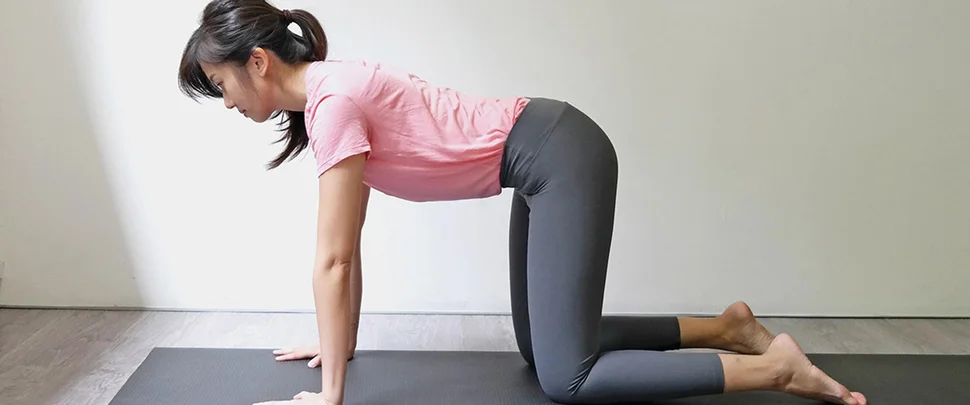
- Align your wrists behind your shoulders and your knees under your hips to assume an all-fours stance while on your knees.
- Take a deep breath.
- Pull upward with your abdominals, rounding your back and pulling into your arms, as you release the breath.
- Release gradually, then take a step back to neutral.
- Perform five to ten repetitions.
Seated Pelvic Tilts
A pelvic tilt exercise that you can perform while seated is not a reliable method. This variant is harder than it looks since you have to maintain your balance while using an exercise ball, which requires your core to be active.
Make sure the ball you select is the appropriate size before you begin. Sitting on it with your hips a little higher than your knees should be possible.
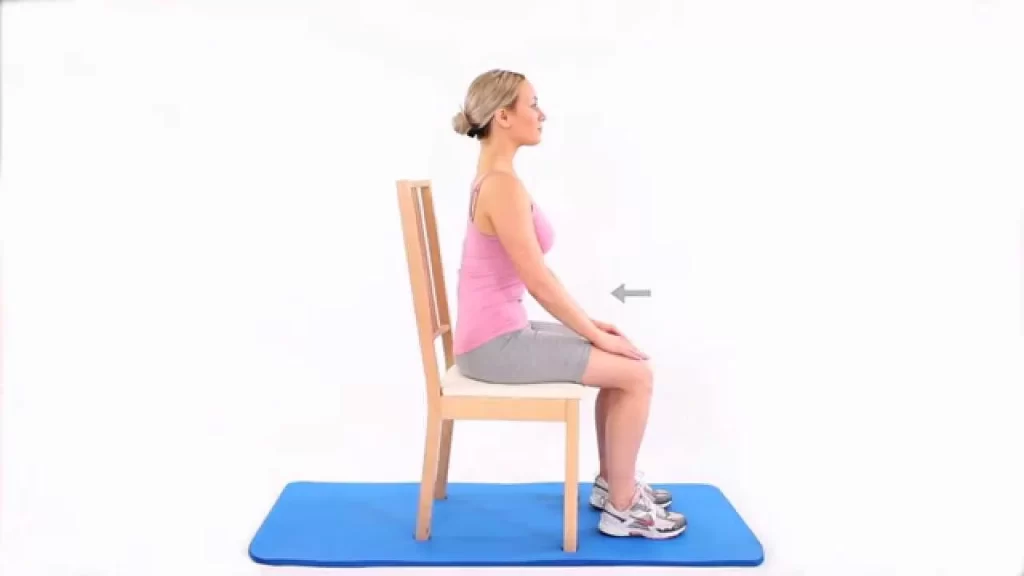
- Place your feet shoulder-width apart and take a seat on an exercise ball. Inhale. To assist you keep balanced and maintain good posture, contract your core muscles.
- Breathe out, tuck your tailbone under, and roll forward on the ball a little bit.
- Breathe in and push your tailbone backward to roll the ball away from your feet and back to a neutral position.
- Perform five to ten repetitions.
March is the Pelvic Tilt with the First Progression.
Pelvic-tilt-march
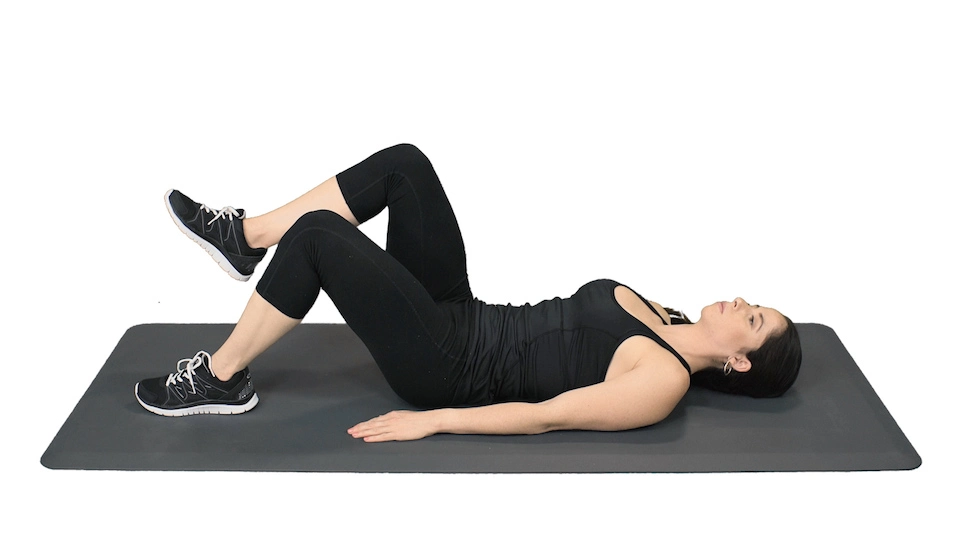
You will perform the Basic Pelvic Tilt exercise while lying on your back to add the march. Nevertheless, you will raise one foot off the ground and bring your knee in towards your chest after contracting your abs and tilting your pelvis.
Just as you raise the leg to your chest, make sure your lower back stays firmly on the floor. Return that foot to the ground and bring the other knee up to your chest.
March on, switching legs, until all repetitions are finished. When you acquire confidence in your ability to maintain your low back against the ground and your abs braced, you can increase the pace of this controlled march.
Approach the Pelvic Tilt Double Knee Tuck.
Pelvic-tilt-knee-tuck
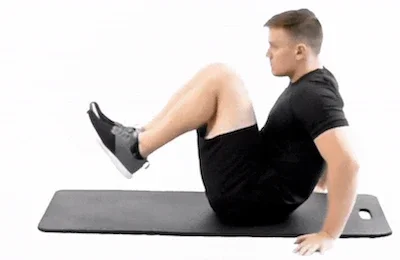
An alternative to the standard tilt, the double knee tuck involves keeping your lower back flat on the floor and tucking both knees in towards your chest as opposed to merely holding. When you lift both knees in towards your chest, take steady, deliberate steps and keep your low back against the floor.
Before you are ready for the double knee tuck, pause, reset, or regress the exercise back to the march if at any stage your abs aren’t working and your lower back isn’t strongly pressed into the ground. You must put quality motions first rather than just moving as fast as possible.
Advance to the Pelvic Tilt with Single Leg Lowers once the tilt has been stabilized with the Double Knee Tuck.
Scissors-ab-exercise
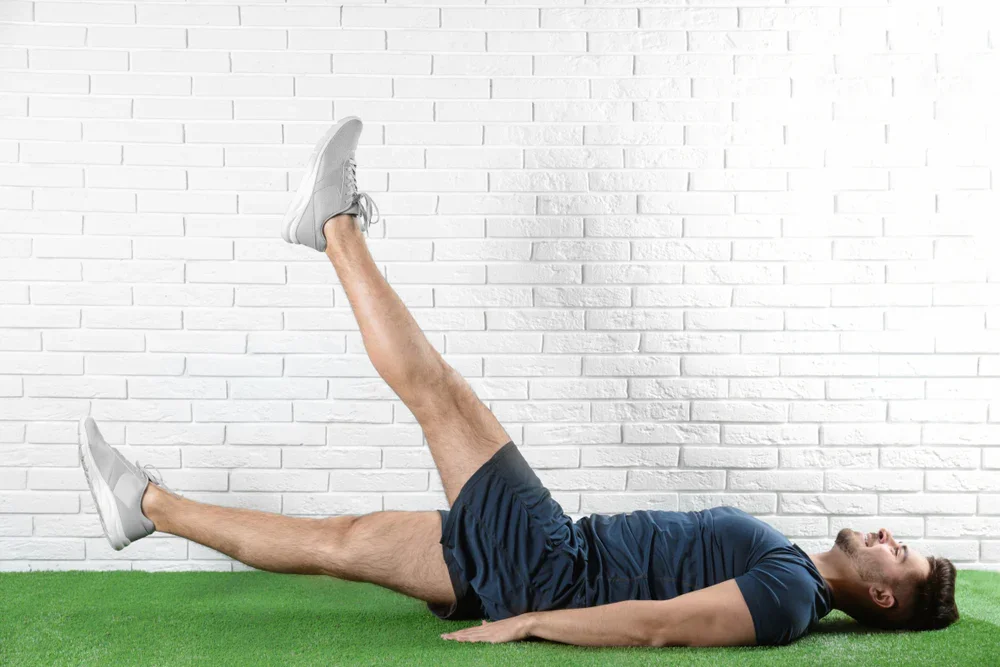
To perform the single-leg lowers, bring both legs straight up towards the ceiling while using the fundamental pelvic tilt to contract your abs. Lower one leg towards the ground while maintaining your lower back against the floor and your abs tight. Your abs will have to work more to remain engaged the lower the leg gets about the ground.
Your heel should only be barely above the ground as you lower your leg. Remember to use your glute as well as the leg as you descend it. The leg is then raised back up and the other leg is lowered while maintaining a straight posture. Legs alternately descend while the other leg remains raised straight towards the ceiling.
Strive to bring the leg as near to the floor as you can. If you are unable to maintain your core engaged, don’t feel as though you have to lower the leg down. With more practice engaging your core, you will be able to extend your range of motion. Reset and even regress the exercise if your lower back isn’t pressed firmly into the ground at any stage. Either return to the double knee tuck or refrain from lowering the straight leg down.
Advance to the Double Leg Lowers Pelvic Tilt.
Leg-lower-ab-exercise
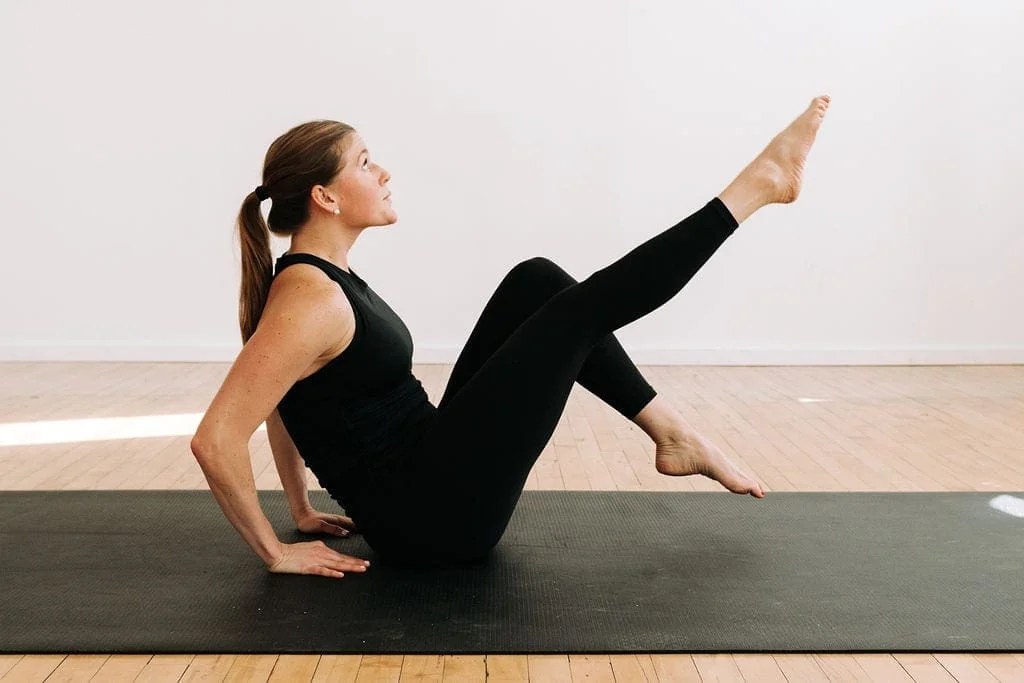
As with the single-leg lowers, adjust yourself into a pelvic tilt and elevate your legs towards the ceiling for the double-leg lowers. Afterward, descend both of your legs towards the floor while maintaining a solid low back and braced abs. In case your lower back lifts off the ground when lowering your legs, halt and straighten your back.
Next, either shorten your range of motion or go back to lower body exercises using only one leg. But if you can maintain your abs contracting, drop your legs until your heels are only an inch off the ground, then raise them back up. As you descend, don’t forget to use your glutes. Additionally, ensure that your legs remain as straight as possible during the entire exercise.
It is possible to ensure that your lower back is firmly pressed into the ground for all of these progressions by placing a towel below it. After placing the towel squarely beneath your lower back, do the Pelvic Tilt to contract your abs.
workouts to strengthen the front and rear pelvic tilts
These simple exercises can help prevent anterior pelvic tilt if you spend a lot of your day sitting down.
Half-kneeling hip flexor stretch
Your hip flexors will become more flexible and relaxed with this exercise.
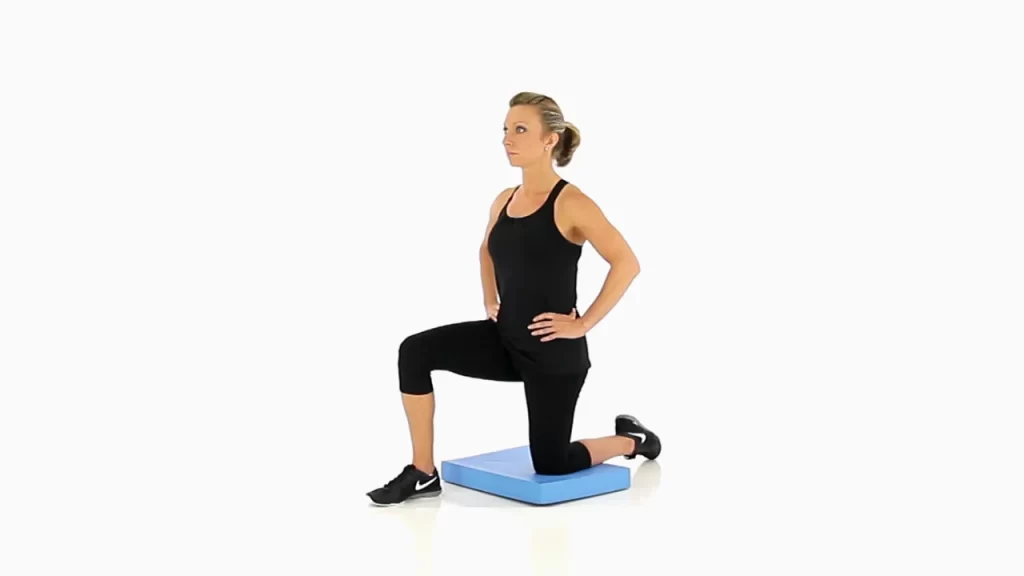
- Till your right knee is flat on the ground, bend your left leg forward.
- If this hurts, place a cloth beneath your knee.
- When it comes to your left knee, your leg should be 90 degrees bent.
- Tighten the muscles in your abdomen and gluteus to move your pelvis forward.
- Step forward with your right leg until you start to feel tightness in your right hip flexor and inner thigh.
- Repeat up to five times after holding for 30 seconds and letting go.
- Change your legs.
You shouldn’t feel any strain at the front of your thigh when performing this stretch. You should feel a tiny strain in your hip flexors, but the stretch shouldn’t hurt. Remember to maintain a small tilt in your pelvis for the entire stretch.
Bridge
You’ll build stronger gluteus and hamstring muscles with this exercise.

- Place your arms by your sides and lie flat on your back with your knees bent, feet hip-width apart, and feet flat on the floor.
- As you raise your pelvis off the ground, press your heels into the ground until your thighs and upper torso are in a straight line.
- Hold for two seconds, then gently descend and repeat eight to twelve times.
To keep your bridge in the proper alignment, be sure to tense your gluteus and abdominal muscles while in this position.
Kneeling leg lift with back stretch
This exercise will help to stretch your back and gluteus muscles while also helping to tighten your abdominals.
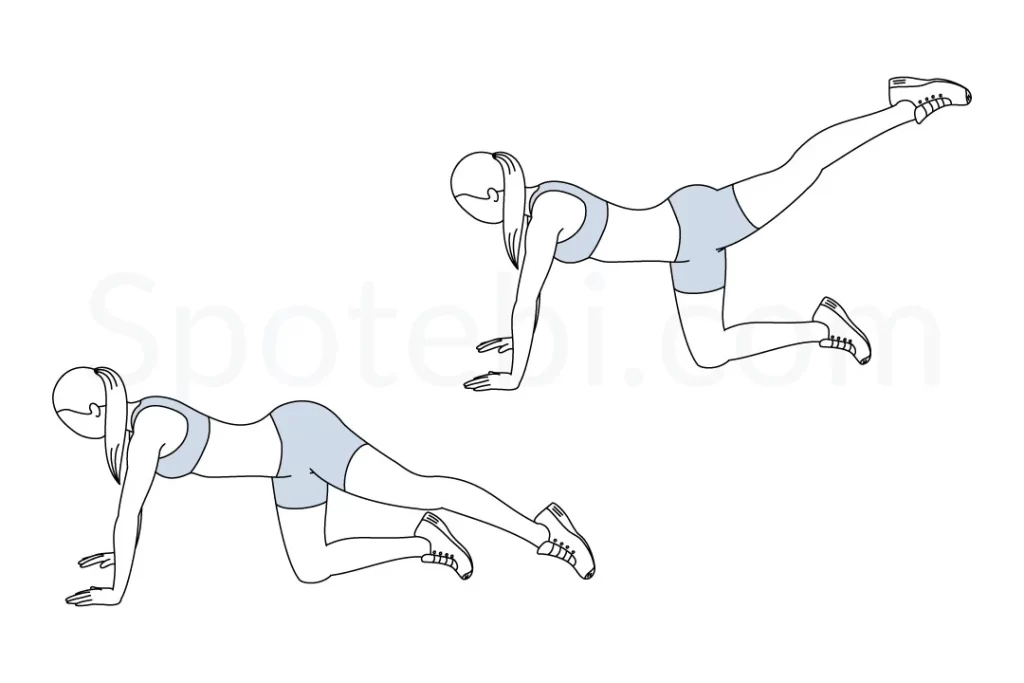
- On your hands and knees, descend.
- On the ground, place your hands shoulder-width apart. Orient your hips and knees in line.
- Your back should be parallel to the floor for your pelvis to be in a neutral position.
- Exhaling causes your belly button to draw in towards your spine and your back to arch.
- Once you’ve held for two seconds, let your spine revert to its neutral position.
- To get your raised leg and body in alignment, extend one leg back and raise it to the same height as your body.
- Maintain a neutral posture for your spine.
- Repeat this pose ten times by lowering the leg after holding it for a maximum of five seconds.
- Change your legs.
This workout will tone your back muscles and strengthen your gluteus and abdominal muscles.
Always keep your extended leg parallel to your body. Back pain might result from overarching the back.
Squats
This is a full-body workout that tones the quadriceps, hamstrings, and glutes, among other muscles.
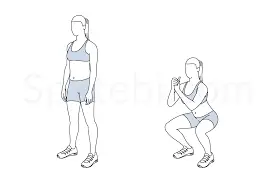
- Position your toes forward and your feet shoulder-width apart.
- After your thighs are parallel to the floor, bring yourself down to a sitting position. As you maintain a neutral back position, make sure your abs remain tight.
- Tighten your gluteus muscles to push yourself up to a standing position and shift your pelvis slightly forward.
- Do this fifteen to twenty times.
- Keep your knees from going past your toes or rotating inward when you squat. Maintain a neutral posture with your back. Avoid overarching or flattening your back’s natural curve. Tighten your gluteal and abdominal muscles.
Advice: Imagine yourself sitting on a chair as you look straight ahead.
Pelvic tilt
This exercise stretches the muscles in your lower back and strengthens the muscles in your abdomen.
How to Do a Pelvic Tilt?
Pelvic tilts can be performed supinely on the floor, standing with your back to a wall, on all fours, or while seated on an exercise ball. These several pelvic tilt positions all support the development of stronger core muscles. A supine pelvic tilt is suitable for most people, even those who have just given birth. You can lie on a solid bed, an exercise mat, or the floor if it’s more comfortable for you to perform pelvic tilts.
You are essentially removing your lower back’s natural curve when you do a pelvic tilt from this position. Imagine that when you tilt your pelvis, water spills toward your abdomen. This can help you visualize your pelvis as a bowl of water.
This is the procedure for doing a pelvic tilt.
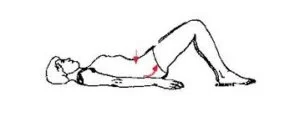
- Place your feet solely on the ground while on your back and bend your knees. Your lower back will be somewhat elevated off the floor in this neutral position by your lumbar spine’s natural curve.
- Breathe out, then softly move your hips in the direction of your head. Your lower back will press into the floor when you perform this.
- Take a few deep breaths here. Take a breath when you’re ready, then step back into neutral.
- Perform five to ten repetitions.
You should keep an eye on your progress because this exercise will assist in bringing your spine into the proper neutral posture.
Leg lunges
Strong leg muscles can help rectify a posterior pelvic tilt by keeping no one muscle from taking the front stage. Lunges help to build stronger glutes, quadriceps, and hamstrings.
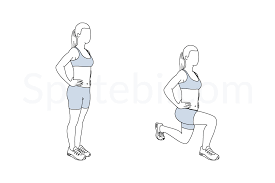
How-to
- Step your right leg forward while maintaining a standing position with your feet together.
- Raise your right leg to a ninety-degree angle. Maintaining your right leg at a ninety-degree angle, your other knee should come into contact with the ground. To verify your position, use a mirror. Using your right foot, push off to get back to the starting position.
- Make a 90-degree angle as you step forward with your left leg so that your right knee touches the ground.
- Make three sets of ten to fifteen lunges.
Caution: Do not bend your knees past your toes as this may result in knee discomfort. If you have knee pain, you might want to focus on other leg exercises rather than lunges.
Static hamstring stretch
The three back muscles in your legs are called hamstrings. Excessive sitting and standing can tighten them up, which might result in poor posture.
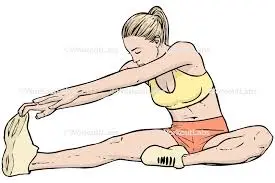
How-to
- Seated in a firm chair without a cushion, extend one leg in front of you.
- Your back should remain straight as you bend forward from the hips until you feel a stretch in the back of your leg.
- For 10 to 30 seconds, hold.
- Continue with the opposite leg after switching.
Superman exercise
The reason this exercise is called the “Superman” is that it resembles a superhero in midair. Your gluteus maximus, which is attached to your pelvis, and your lower back may both benefit from increased strength.
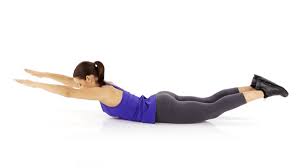
How-to
- Arrange your arms in front of you while lying on the floor on your stomach.
- Make an effort to keep your chest up for ten to thirty seconds. Lower after that.
- With a 10-second rest in between, repeat this three times.
Caution: This is not the exercise for you if you have a poor back. To make this workout more comfortable, you could also wish to place a mat or a towel on the floor.
Cobra stretch
The name of this stretch comes from the erect posture of the deadly cobra snake. As the front body lengthens, the Cobra posture is perfect for a posterior pelvic tilt because it works the muscles in the back, glutes, and hamstrings.
More flexible spines promote better posture and reduced lower back pain—especially for those who experience menstruation discomfort, which naturally causes you to slump.

How-to
- Start by laying your belly down on the mat. Breathe into the next movement while angling your legs to line up with your hips and pointing your toes.
- Press yourself off the ground while bending your elbows gently until your back starts to extend.
- Support your weight with your hands and wrists for fifteen to thirty seconds. Take caution not to bend your elbows at this particular moment. As you enter and exit the posture, take calm, deep breaths.
Caution: Keep your elbows bent and your tummy on the floor for a modified Cobra pose that won’t strain your neck or back as much. Bring your chin down to a comfortable level and look forward.
Foam rolling for calves
Massage treatment and foam rolling, commonly referred to as self-myofascial release, are comparable. It’s an excellent method for relieving stress in various body parts following a workout. You may get foam rollers from sporting goods stores and online.
Foam rolling loosens the fascia, or connective tissue, underneath the skin that is necessary for normal movement. Your posterior pelvic tilt may be alleviated by foam rolling any area of your body, but especially your legs.
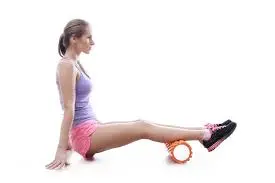
How-to
- Lie on your side and position the foam roller under your calf area.
- Roll the foam roller up your calf slowly, paying attention to any “hot spot.” You experience increased tension or tightness in this area.
- Give this area a 30-second rollover.
- Change legs and repeat the motion. Use the identical method on your thighs as well.
- Roll the foam roller up the back of your leg while lying on your back for greater pelvic concentration and benefits.
- The foam should be rolled up your hamstrings and towards your glutes. Decide where to sit that is hot, then focus your rolling there. Change legs and repeat.
Even though you could occasionally feel pain, foam rolling can be calming and similar to getting a massage. In addition, you can use foam rolling to your middle back and give yourself a spinal massage.
Safety and Precautions
Pelvic tilts are safe for most people, thanks to their numerous adjustments and variants.
Pregnant women or those with conditions that make lying flat on one’s back difficult may want to refrain from doing supine pelvic tilts.
Pelvic tilts performed while standing or kneeling may be more difficult, but they’re a better option for those who can’t lie on their back or are pregnant.
Kneeling pelvic tilts should not be performed if you:
- Possess or are recuperating from a hand, wrist, or knee injury.
- He had recently undergone surgery on his knee, wrist, or hand.
You should refrain from doing standing pelvic tilts until your injuries have healed if you have balance issues or injuries to your feet or knees that do not allow you to bear weight.
As is customary, consult your physician before beginning or stepping up your exercise regimen, particularly if you have any medical concerns, or injuries, or are recovering from surgery related to your neck, spine, abdomen, or pelvis.
Try It Out
Pelvic tilts can be performed independently or in conjunction with Pilates, physical therapy, postpartum exercises, ab exercises, and other regimens. To begin, you can attempt the following exercises in addition to others:
- Standing Ab Workout.
- Pilates Pelvic Curl.
- Postpartum Ab and Core Workout.
- Pilates Pelvic Clock.
- Postpartum Exercises.
Summary
Pelvic tilt exercises strengthen and extend your abdominal muscles, which helps ease sciatica and lower back discomfort. Apart from the standard pelvic tilt, some modifications modify the alignment for individuals who are expecting or experience pain that prevents them from lying flat on their back.
Make sure you follow all the required safety measures, such as consulting your doctor before beginning or stepping up your exercise regimen.
FAQs
What is the main cause of pelvic tilt?
Extended periods of inactivity can cause a pelvic tilt in many persons. 26.9% of American adults spend more than four hours a day sitting, and 19.7% spend more than eight hours sitting, according to a recent survey. Sitting for long periods can make postural issues like pelvic tilt worse.
How do you fix pelvic tilt?
Pelvic tilt
Arrange yourself so that your back is flat on the floor, your toes pointing forward, your legs bowed.
Push your pelvis up towards the ceiling by pulling your belly button in towards your spine.
As you tilt your pelvis forward, tense your hip and gluteus muscles. Tent for five seconds.
Perform five sets of twenty reps.
What are the symptoms of a tilted pelvis?
Common symptoms involve:
Lower back ache that is widespread.
worsening of the pain during or after walking.
Pain during a prolonged duration of inactivity.
Aches and pains when in a prone position.
Pain that travels to the buttocks or hips.
What is a normal pelvic tilt?
The angle created by a line joining the vertical axis and the center of the bifemoral heads to the middle of the sacral endplate is known as pelvic tilt (PT), and it is a position-dependent trait. There is an average range of 13.0 ± 4.9° for anterior pelvic tilting and 8.9 ± 4.5° for posterior pelvic tilting.
Is a pelvic tilt normal?
For both men and women, a certain amount of anterior pelvic tilt is natural. For males, the current “norms” range from 4 to 7 degrees of anterior rotation, and for females, from 7 to 10 degrees.
Does pelvic tilt go away?
Fortunately, most anterior pelvic tilt may be effectively treated with workouts that target and strengthen weak muscles while also stretching tight ones. As you continue with these workouts, your pelvis will eventually return to its normal position.
How painful is a tilted pelvis?
Depending on the degree and duration of the pelvic tilt, different symptoms may be experienced. The symptoms of a skewed pelvis might include pain and discomfort when sitting, difficulty walking, and in women, an uncomfortable menstrual cycle or even trouble getting pregnant.
Does pelvic tilt affect height?
Indications and manifestations. The condition known as lumbar hyperlordosis, or anterior pelvic tilt, significantly affects a person’s height; a loss of 0.5 to 2.5 inches (1.27 to 6.35 centimeters) is typical.
Is pelvic tilt caused by a weak core?
These abdominal muscles are stretched as a result of lordotic curves, which are brought on by the pelvic tilt caused by APT. The person eventually develops weak core muscles as a result of this posture. Particularly, it impacts the obliques and transverse abdominals.
Do men have pelvic tilt?
A pelvic tilt was found in 85% of males and 75% of females, a posterior tilt in 6% of males and 7% of females, and a neutral presentation in 9% of males and 18% of females.
How many days does pelvic tilt correction take?
The anterior pelvic tilt, a frequent symptom of prolonged sitting, can put a strain on the lower spine in addition to making one appear overweight. Fortunately, the problem can be resolved with a short fitness regimen that lasts 8 to 12 weeks.
Can physiotherapy fix pelvic tilt?
Physical treatment is usually effective in correcting a pelvic tilt and consists primarily of muscle-strengthening exercises, stretches, and massages. To enable comfortable movement in situations where one leg is longer than the other, shoe inserts may be recommended. Medication may also be used to control pain.
Do pelvic tilt exercises work?
Exercises for pelvic tilt will assist to strengthen and stretch the muscles in your abdomen, as well as reduce lumbar discomfort and sciatica.
What are the different types of pelvic tilts?
There are three typical forms of pelvic tilts to consider when analyzing potential problems: anterior, posterior, and lateral pelvic tilts.
Can heavy lifting cause pelvic tilt?
Many men and women who perform deadlifts and squats have anterior pelvic tilt. Astute observers will note that you are undoubtedly strengthening the muscles that exacerbate anterior tilt when you perform those workouts and preserve a robust back arch. To maintain your spine’s extension, employ your spinal erectors.
What problems can pelvic tilt cause?
All over your body, tight hip flexors lead to discomfort and dysfunction. Due to an imbalanced head and shoulder posture, a tipped pelvis can cause migraines. Pelvic misalignment not only results in pain in the muscles and joints but also the digestive system, leading to constipation and frequent urination.
How can my pelvic tilt be corrected at home?
Placing your feet flat on the floor and bending your knees is known as the Pelvic Tilt. After that, begin gradually tilting your pelvis upward while attempting to press your lower back flat against the ground. Hold, then let go after a little while. Perform this exercise multiple times.
What are the benefits of pelvic tilt exercises?
Pelvic tilts assist in reversing that position. They also strengthen your deep core to support your body during daily activities like lifting and squatting, and they assist release tight muscles in your lower back that may be causing you back discomfort.
References
- Pelvic Tilt. (n.d.). Physiopedia. https://www.physio-pedia.com/Pelvic_Tilt
- Ryt, A. P. (2022, September 29). How to Do a Pelvic Tilt. Verywell Fit. https://www.verywellfit.com/how-to-do-pelvic-tilts-3566908.
- Ginta, D. (2023, February 24). 5 Exercises for Anterior Pelvic Tilt. Healthline. https://www.healthline.com/health/fitness-exercise/anterior-pelvic-tilt-exercises.
- Anderson, B. (2022, December 13). What Is Pelvic Tilt? WebMD. https://www.webmd.com/a-to-z-guides/what-is-pelvic-tilt.
- Alternating Pelvic Tilt. (n.d.). Hingehealth. https://www.hingehealth.com/resources/articles/pelvic-tilt/.
- Pelvic tilt. (2024, January 25). Wikipedia. https://en.wikipedia.org/wiki/Pelvic_tilt.
- Image-Redirect Notice. (n.d.). https://www.google.com/url?sa=i&url=https%3A%2F%2Fwww.healthhub.sg%2Flive-healthy%2Ftime-to-exercise-pelvic-tilt-in-four-point-kneeling&psig=AOvVaw1zFyW8AYS9uloVjBst6lRJ&ust=1711170865630000&source=images&cd=vfe&opi=89978449&ved=0CBIQjRxqFwoTCKi52qyOh4UDFQAAAAAdAAAAABAa.
- Image-How to do a pelvic tilt sitting. (n.d.). YouTube. https://www.google.com/url?sa=i&url=https%3A%2F%2Fm.youtube.com%2Fwatch%3Fv%3DPdEKzbBFZrE&psig=AOvVaw2Nx1OxgoxARu-EK0M-cYkj&ust=1711171035366000&source=images&cd=vfe&opi=89978449&ved=0CBIQjRxqFwoTCMD19P2Oh4UDFQAAAAAdAAAAABA4.
- Image-Redirect Notice. (n.d.). https://www.google.com/url?sa=i&url=https%3A%2F%2Fapp.sworkit.com%2Fexercise-library%2Fpelvic-tilt-with-march&psig=AOvVaw3oD8jcN_ojHYxP5OnFCXAx&ust=1711171238668000&source=images&cd=vfe&opi=89978449&ved=0CBIQjRxqFwoTCMi_59-Ph4UDFQAAAAAdAAAAABAE.
- Image-Redirect Notice. (n.d.). https://www.google.com/url?sa=i&url=https%3A%2F%2Fanabolicaliens.com%2Fblogs%2Fthe-signal%2Fseated-knee-tucks&psig=AOvVaw07A2vsfEssUfvjnq8FYaEE&ust=1711171363033000&source=images&cd=vfe&opi=89978449&ved=0CBIQjRxqGAoTCKDHmZqQh4UDFQAAAAAdAAAAABC4AQ.
- Image-Redirect Notice. (n.d.). https://www.google.com/url?sa=i&url=https%3A%2F%2Fsteelsupplements.com%2Fblogs%2Fsteel-blog%2Fhow-to-do-scissors-for-ab-strength-form-and-benefits&psig=AOvVaw1w2T5bcIfP5vHOz2bFbF7B&ust=1711171664071000&source=images&cd=vfe&opi=89978449&ved=0CBIQjRxqFwoTCIjk2amRh4UDFQAAAAAdAAAAABA4.
- Image-Redirect Notice. (n.d.). https://www.google.com/url?sa=i&url=https%3A%2F%2Fwww.nourishmovelove.com%2Fbest-lower-ab-workout-for-women%2F&psig=AOvVaw0dXtd35rGisP8hZh2jLSSp&ust=1711171836441000&source=images&cd=vfe&opi=89978449&ved=0CBIQjRxqFwoTCOC-0vuRh4UDFQAAAAAdAAAAABAh.
- Image-Redirect Notice. (n.d.). https://www.google.com/url?sa=i&url=https%3A%2F%2Fwww.functionalmovement.com%2FExercises%2F788%2Fhalf_kneeling_hip_flexor_stretch&psig=AOvVaw22ZvSNuGEV8jFjCQ4G0GAT&ust=1711172094612000&source=images&cd=vfe&opi=89978449&ved=0CBIQjRxqFwoTCNis0faSh4UDFQAAAAAdAAAAABAQ.
- Image-Redirect Notice. (n.d.). https://www.google.com/url?sa=i&url=https%3A%2F%2Fwww.spotebi.com%2Fexercise-guide%2Fback-leg-lifts%2F&psig=AOvVaw0tuML9z0iQawFfiLbWT9Vy&ust=1711172424682000&source=images&cd=vfe&opi=89978449&ved=0CBIQjRxqFwoTCLDulJSUh4UDFQAAAAAdAAAAABAE.

